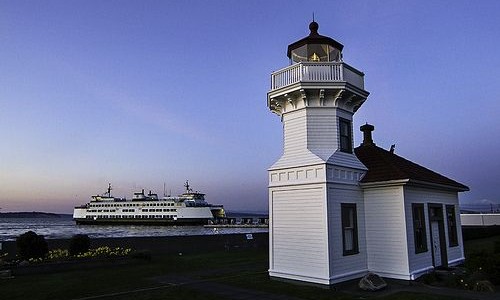By Peter Anderson, Director, Mukilteo Historical Society
When the Mukilteo Lighthouse lamp was first lit on March 1, 1906, keeper Peter N. Christiansen was on site and ready to ensure its steady beacon remained a guiding light for ships entering Possession Sound. Christiansen’s appointment to Mukilteo came as a reward for his long record of faithful services. He had been in the merchant marine for 11 years, in the U.S. Navy for 10 years, and keeper of the Turn Point lighthouse in San Juan county for nearly 12 more years.
Our first keeper was born Peder Nicolaij Kristiansen on December 3, 1858, in Stavanger, Norway, to parents Christian Bentzen and Guri Christine Hansvolden. Located on the southwest coast of Norway, Stavanger is a busy seaport and ranks as the country’s fourth largest city. It is not surprising that emigrants from there continued with life’s activities closely connected to the sea. Peter went to sea at age 14 and joined the merchant marine in about 1873. Records show he immigrated to the United States in 1882, sailing from Glasgow, Scotland.
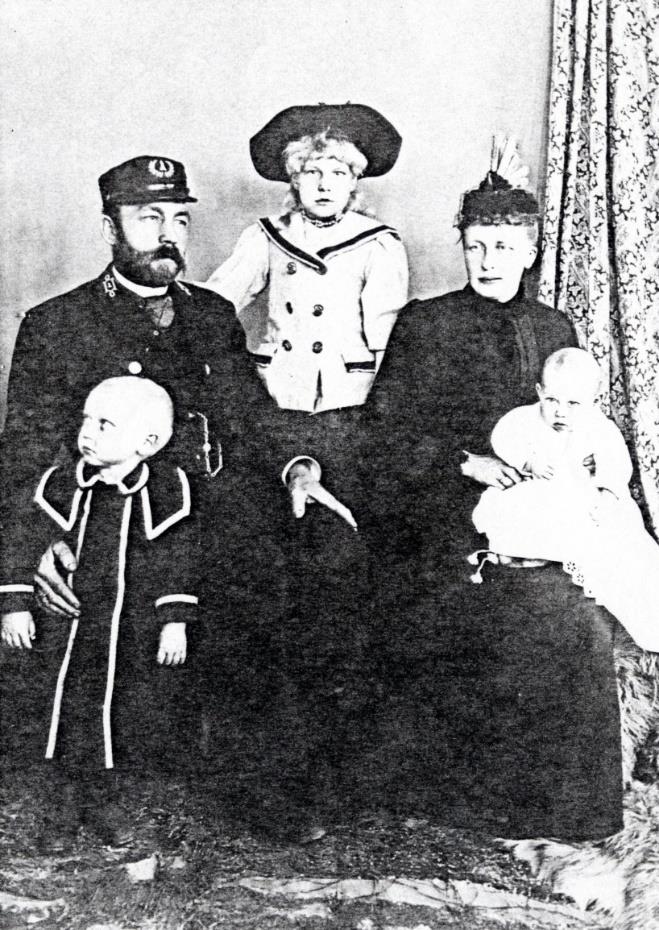
Peter joined the U.S. Navy about 1884. His previous stints with the merchant marine and later duty with the Navy evidently took him back and forth to Norway, because, on January 12, 1888, he married Theodine Tonnessen in Oslo, Norway. Theodine was the daughter of Hans Tonnessen. Peter and Theodine had a daughter, Anna, born in Oslo on December 13, 1888. Peter established permanent residency in the U.S. in 1892, possibly starting in Oakland, California.
In 1894, Peter relocated from Oakland, California with his pregnant wife, Theodine, and daughter, Anna, to become Assistant Keeper at the Turn Point Lighthouse on Stuart Island in the San Juan Islands. Son Charlie Christiansen, was born in August two months after the couple’s arrival at Turn Point, and was the first white baby born on Stuart Island. There followed a son Perry, born February 1, 1896, and a daughter Clara, born in 1902, both on Stuart Island.
While at Turn Point, during the evening of February 16, 1897, repeated blasts of a ship’s whistle brought Keeper Durgan and Assistant Keeper Christiansen rushing out into the frigid winter night to find that the tug Enterprise had run aground on rocks near the station. Equipped with pike poles, the keepers plunged into the water and managed to free the tug and direct it to a safe moorage. The tug captain appeared to be the only person on board, until several drunken crew members were found to be below deck.
The sober captain told the keepers that other crew members were drifting aboard a barge that he had cut lose before the tug foundered on the rocks. Wet and cold, the keepers pushed off in the station’s boat to find the barge. They found it and used a breeches-buoy to rescue all on board, but their troubles were not over.
One of the intoxicated sailors on the tug brandished a butcher knife and threatened his comrades. With some help, the captain was able to subdue the knife wielder, who was placed in a straight-jacket and locked up in the station’s hen house.
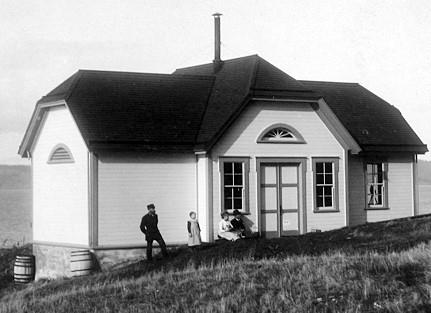
For their rescue efforts, the keepers received a letter from the Lighthouse Board that read, in part, : “Such services to humanity merit the highest commendation, and the Board is glad to number among its employees men of such sterling courage and fidelity to duty, who are willing to jeopardize their own lives in order to save the lives of others.”
Peter Christiansen was promoted to head Keeper at Turn Point in 1898. Like most Keepers of the time, he was a member of the US Lighthouse Establishment, which was funded by the US Treasury Department (and later by the US Department of Commerce). Thus, Peter was a federal employee. He is listed in the 1905 Official Register of the United States Officers and Employees of the Civil, Military, and Naval Service. The listing under the Department of Commerce chapter shows him as Keeper at Turn Point, WA, with a compensation of $800.
Peter and his family must have been delighted by his reassignment to be Mukilteo Lighthouse Keeper in early 1906. Unlike many other lighthouses that are situated in remote locations, the Mukilteo Lighthouse was close to a community with schools and shops. Also, while at Turn Point, each of the keepers and their families lived in one side of a two-story duplex. At Mukilteo, each of the keepers had more spacious accommodations in their own two-story house.
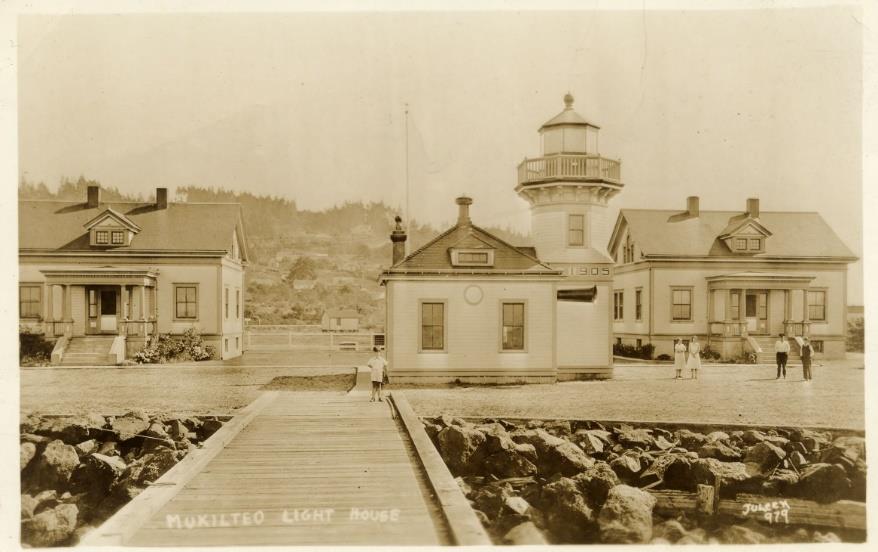
Keeper’s jobs were not easy. In the early days, the lighthouse used a kerosene lamp, and every evening, a half hour before sunset, the keeper climbed the stairs with a lighting flame to light the lamp inside the Fresnel lens at the top of the tower. The keepers had to keep the wick trimmed and the glass in the lens and tower windows free of smoke. They had to climb the stairs again every three to four hours during the night to replenish the lamp oil and adjust the clockwork mechanism that rotated the lens apparatus to produce the proper flashing pattern. They had to maintain the compressor machinery that operated the fog horn. They cared for the grounds around the light station. They maintained the windmill and water pump that provided fresh water for themselves and the surrounding community. Together with their families, they had to keep the lighthouse and their homes in spotless condition for an inspector who could come unannounced at any time.
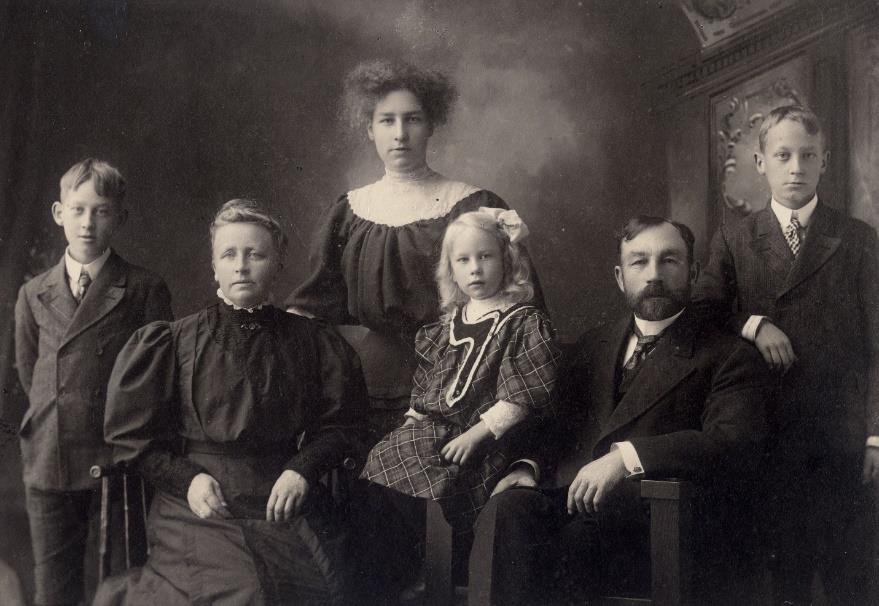
The heavy workload was split between the Keeper, Assistant Keeper, and their families. Peter Christiansen had a particularly long tenure serving as Mukilteo’s Keeper from 1906 until his death in 1925. Over that period he had worked with eight different Assistant Keepers: David O. Kinyon (1906-07), William S. Denning (1907-09), John Carlson (1909), George Carlson (1909), Andrew Jackson (1909-12), Ernest Edgar Day (1913-17), Chart Pitt (1917-22) and Harry Albert Dusenberry (1922-32).
Mukilteo’s first Assistant Keeper, David O. Kinyon, was born May 22, 1874, in Kansas. His wife, Nora Ethel Pierson, was born in Missouri around 1882. Together they had two sons: Mars Pierson, born 1899, and Norman O, born 1920. The Kinyons came to Mukilteo from the Destruction Island lighthouse. They only stayed at Mulkiteo for a year before moving on to serve elsewhere, including as Second Assistant at the Grays Harbor light from 1909-1910, and later as Keeper at the Umpqua lighthouse in Oregon from 1928-1937. Interestingly, Kinyon’s son Mars served as Second Assistant Keeper at Umpqua from 1935-1939.
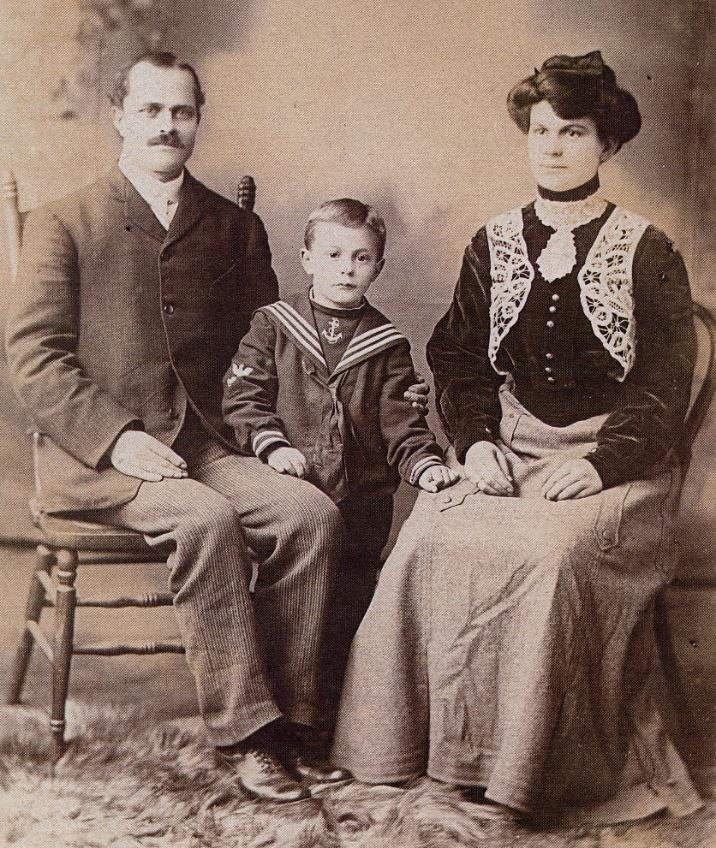
Peter Christiansen’s daughter, Anna, married the boy living next door to the lighthouse, George Losvar, on October 23, 1910. They had four children who reached adulthood: Theodine, born 1918, Arthur, born 1925, Albert. born 1928, and Paul, born 1930. They also had a son, Alden, born 1912, who died around age 12.
In March of 1923, Peter Christiansen applied for a U.S. passport with the intention of going to visit relatives in Norway and Denmark. His application gives some personal identification descriptions of the 54 year-old applicant, including: 5 feet 5 inches tall, blue eyes, brown hair, round face, mustached, and “sailor with girl” tattoo on his left forearm. With his passport issued, Peter began his overseas trip leaving from the Port of New York in the latter part of May or early June 1923. He returned as a passenger on the Frederik VIII, sailing from Oslo on July 27, 1923, arriving in New York on August 8, 1923.
Peter died somewhat suddenly from an apparent heart attack on October 5, 1925. His remains were laid to rest at Everett’s Evergreen Cemetery on October 9, 1925. Following Peter’s death, his wife, Theodine, maintained the operation of the light station for a short time until Edward A. Brooks reported for duty as Mukilteo’s second lighthouse Keeper.
Originally published in the 4/3/2019 issue of the Mukilteo Beacon.
